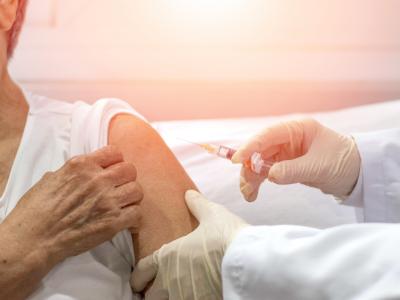Spending bills boost funding for some antibiotic resistance measures
A federal spending bill passed by Congress and signed by President Trump late last week includes millions in additional funds for agencies addressing antibiotic resistance. But funding remained flat for some efforts.
The Labor, Health and Human Services, Education and Related Agencies (Labor-HHS) appropriations bill—one of two Fiscal Year (FY) 2020 spending bills passed by Congress and signed by the President—includes a $50 million increase for antibiotic resistance research at the National Institute of Allergy and Infectious Diseases and a $2 million increase for the Center for Disease Control and Prevention's (CDC's) Antibiotic Resistance Solutions Initiative, which invests in national infrastructure to detect, respond, contain, and prevent drug-resistant infections.
"This legislation funds initiatives that are very important to our nation's health and safety," Society for Healthcare Epidemiology of America (SHEA) president Hilary Babcock, MD, MPH, said in a SHEA press release. "We thank Congress for supporting our commitment to addressing antibiotic resistance in a comprehensive and meaningful way."
The legislation also provides $21 million in funding for FY 2020 for the National Healthcare Safety Network, a tool used by hospitals to track and report data on antibiotic use, antibiotic resistance, and healthcare-associated infections. But as the Infectious Diseases Society of America (IDSA) notes, that funding level remains the same as in FY 2019.
IDSA also expressed concern that no additional funding was provided for the Biomedical Advanced Research and Development Authority, which helps fund development of new antibiotics, and the CDC's Advanced Molecular Detection program, which is helping modernize the public health system's ability to identify new and emerging antibiotic resistance threats.
"With drug-resistant infections causing an estimated 2.8 million illnesses and as many as 35,000 deaths in this country each year, building our capacities to protect the infection-fighting medicines we have, and to ensure the development of urgently needed new medicines must be a significant priority," IDSA said in a statement.
Dec 19 SHEA press release
Dec 19 IDSA statement
Study links childhood allergies to use of multiple antibiotic classes in infancy
Exposure to multiple classes of antibiotics in infancy is associated with increased risk of developing an allergy in childhood, researchers reported last week in a research letter in JAMA Pediatrics.
The retrospective cohort study, conducted by researchers with the Uniformed Services University of the Health Sciences, examined data on 798,426 Department of Defense Tricare beneficiaries who had a birth medical record in the Military Health System database between October 2001 and September 2013 and received a prescription for an antibiotic (penicillin, penicillin with a beta-lactamase inhibitor, cephalosporin, macrolide, or sulfonamide) within the first 6 months of life. The main outcome of the study was the presence of any allergic disease.
Among the children in the cohort, there were 162,605 filled antibiotic prescriptions, with 109,341 children receiving one class of antibiotics and 24,375 receiving more than one class. Over a median of 4.6 years, all antibiotic classes were associated with significant increased risk for developing an allergic disease. Adjusted hazard ratios (aHRs) were highest for penicillin (aHR, 1.30; 95% confidence interval [CI], 1.28 to 1.31) and lowest for sulfonamides (aHR, 1.06; 95% CI, 1.03 to 1.10).
Even after adjustment for the total days of antibiotic supplied, children prescribed an additional class of antibiotic during infancy had increased risk for each subtype of allergic disease: any food allergy (aHR, 1.08; 95% CI, 1.05 to 1.11), anaphylaxis (aHR, 1.08; 95% CI, 1.02 to 1.15), asthma (aHR, 1.47; 95% CI, 1.45 to 1.49), atopic dermatitis, (aHR, 1.13; 95% CI, 1.11 to 1.15), allergic rhinitis (aHR, 1.33; 95% CI, 1.32 to 1.34), allergic conjunctivitis (aHR, 1.18; 95% CI, 1.15 to 1.22), and contact dermatitis (aHR, 1.11; 95% CI, 1.10 to 1.12).
The authors of the study suggest the association between exposure to multiple classes of antibiotics and increased risk of developing childhood allergies may be linked to greater disruption of the gut microbiome.
Dec 20 JAMA Pediatr study












